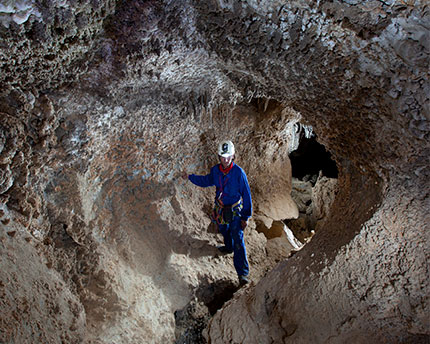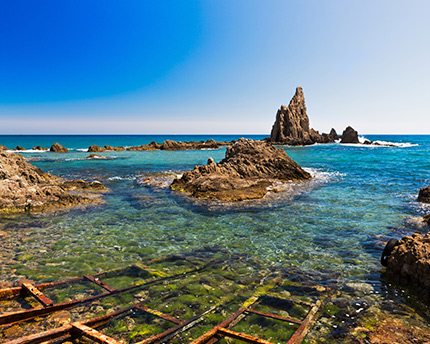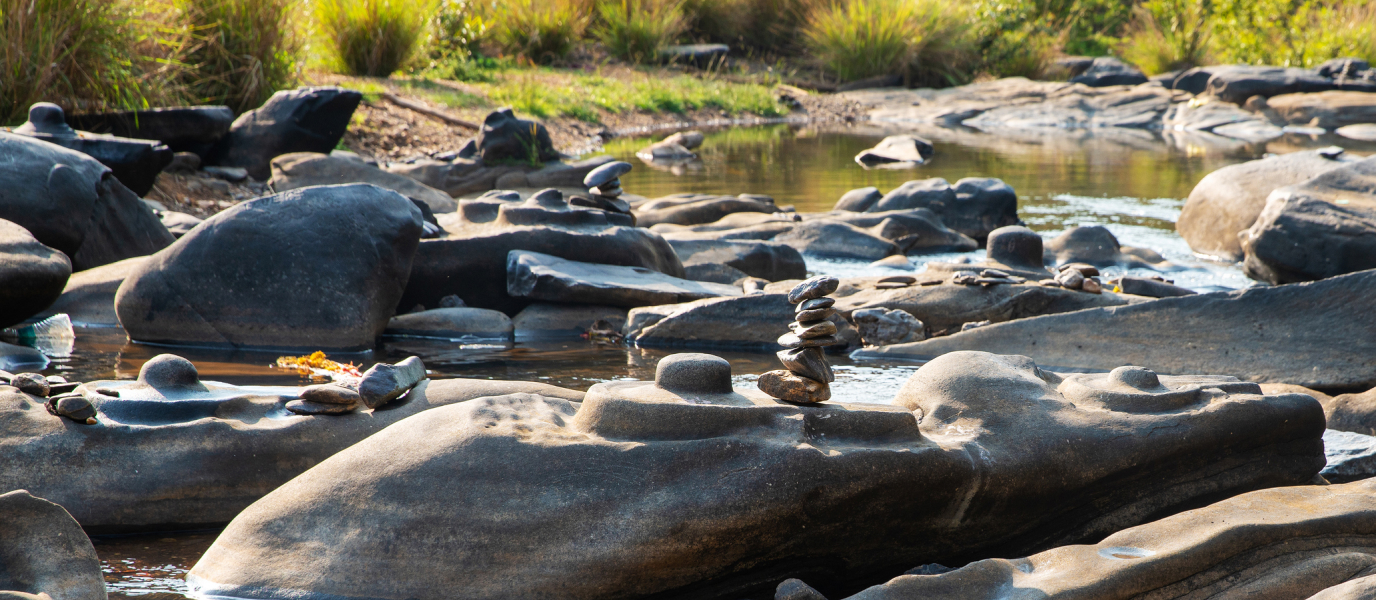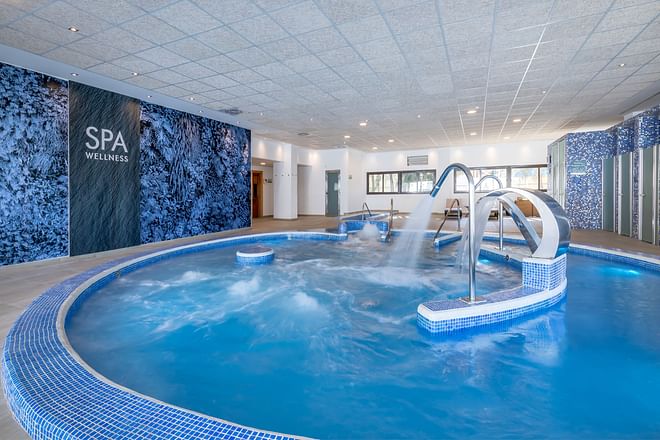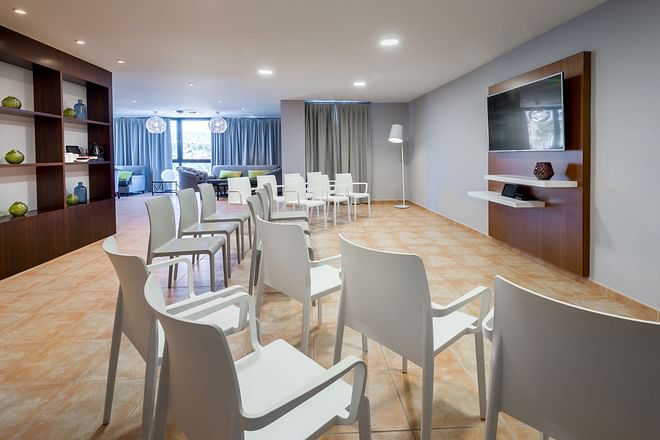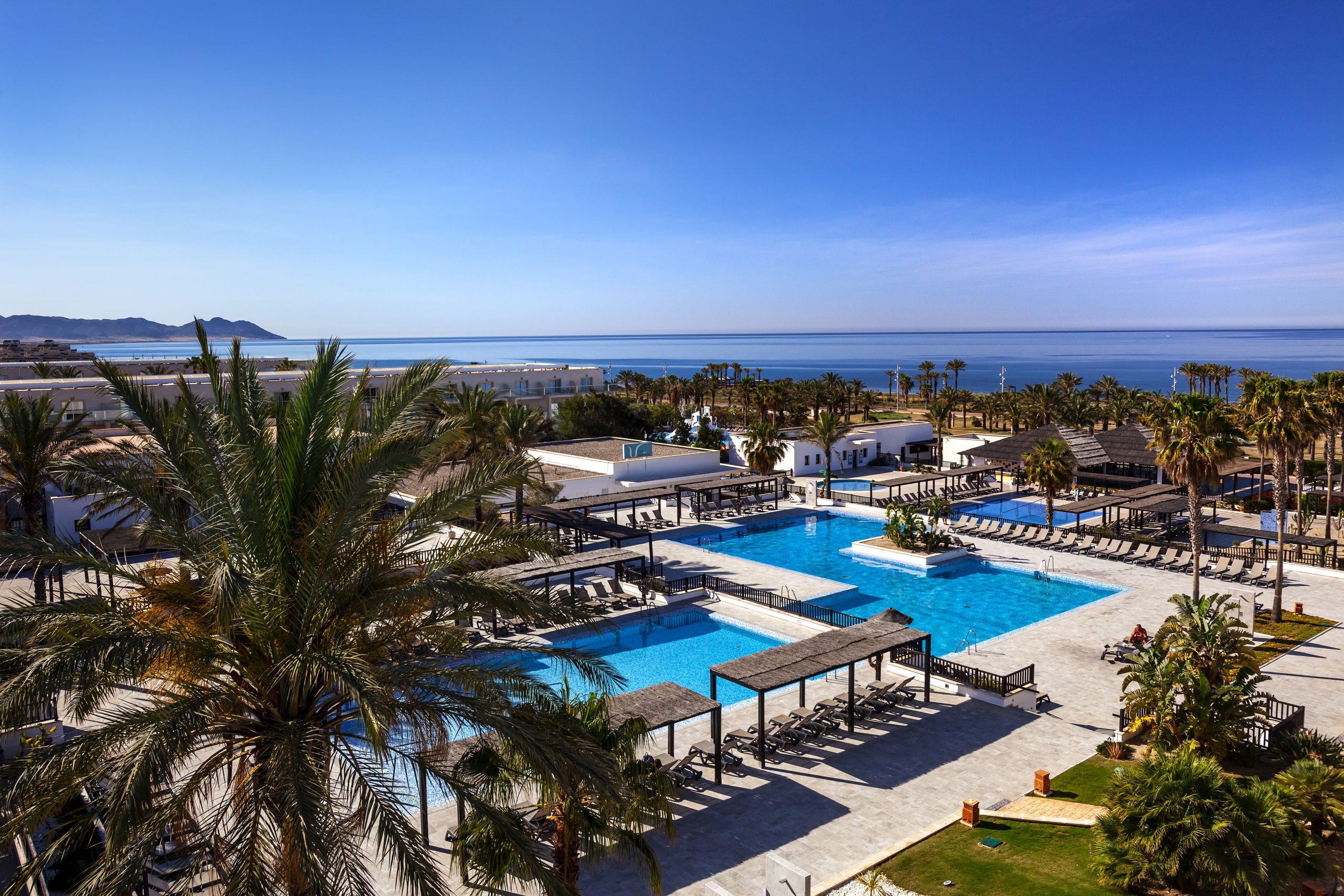The Tabernas Desert is Europe’s most arid desert system. Near the town of Sorbas, atop a natural rock pedestal, it hides an underground labyrinth of thousands of caves covered with crystals. Scarce rainfall and vegetation combined with soil erosion have shaped an environment of canyons, gorges and wastelands, so much so that this Wild West-type landscape has featured in films including The Good, the Bad and the Ugly and Indiana Jones and the Last Crusade.
With more than a thousand caves, the Cuevas de Sorbas are Spain’s largest underground cave system. A comparable number of sinkholes – surface depressions (sometimes large) formed by the breaking up of the gypsum terrain by the action of the rain over millennia – collect condensed moisture and form small oases of palm trees and willow. The slow dissolution of minerals in this way, at the mercy of the weather, creates what is called a karst landscape.
Stalactites, stalagmites and lakes in the Cuevas de Sorbas
Over time, water has filtered into the caves near the town of Sorbas to form underground lakes, stalactites and stalagmites, sparkling gypsum crystals that shine in the lamplight, geodes lined with minerals, gypsum rings and strange sculpture-like formations. The surface habitat near the cave system is home to the Greek tortoise, a protected species that lives among the rushes, oleander and white poplar that thrive in small forests in the damp conditions, supported by the River Aguas ecosystem.
The Cuevas de Sorbas contains tens of kilometres of caves and interconnected cavities in addition to solitary bodies of water that reflect the heavy underground light. The presence of water means that companies offering tours of the Cuevas de Sorbas can only work in four of the caves, and the routes on offer vary depending on how adventurous their clients are!
An underground palace forged by time and water
Around three million years ago the waters of the Mediterranean covered much of what is now the province of Almería, including the space now containing the Cuevas de Sorbas. The Earth was already well into the Cenozoic Era (we’re still in this era in the present day). The current continents were formed during this period. Around 2.5 million years ago the Mediterranean Sea retreated leaving behind large natural deposits of gypsum in the Sorbas depression.
It was then that the history of the Cuevas de Sorbas began. The scant rainfall in this desert landscape is torrential when it does come, and the vegetation is scarce and erodes easily. Thousands of years of exposure to the elements have slowly eroded the water-soluble gypsum and formed sinkholes to create a landscape called karst.
Almería’s cave complex
Sorbas has numerous caves. The largest is the Cueva del Agua at around 8 km long, while the Cueva de Corvadura is the deepest at 120 metres. The Tesoro and Yeso caves are also famous on account of their important geological interest. Within the caves, unique endemic plants such as the Sorbas daffodil and a subspecies of the Chaenorhinum family grow on the gypsum.
The Cuevas de Sorbas and the Paraje Natural del Karst en Yesos de Sorbas are among the few well-preserved examples of these beautiful phenomena in the world. The scarcity of rainfall in the Tabernas Desert has allowed the caves and galleries to form quickly in geological terms, while remaining sufficiently dry and strong to withstand caving in.
The International Union of Geological Sciences and UNESCO plan to put together a list of internationally important sites, and the Geological and Mining Institute of Spain has proposed four Global Geosites or points of interest in the Cuevas de Sorbas.
Routes around the Cuevas de Sorbas
The Cuevas de Sorbas are a fascinating place to visit for all ages. The site has generous opening times though it’s still a good idea to book ahead. Stop in at the town of Sorbas first and the Los Yesares Visitor Centre to learn about the local landscape and geological phenomena.
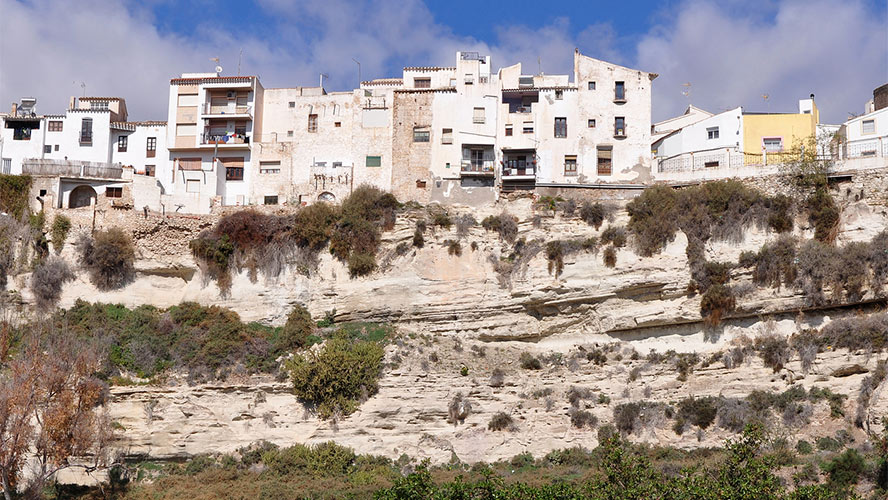
Tour companies in the area offer a selection of trips through the caves, depending on the capabilities of the group. A half-day teaching route – famous among geology students across the world – showcases all the wonders of the karst landscape both above and below ground. All routes are equipped with electric lighting and guides talk Spanish, English, French and German. The standard routes are as follows:
Basic: The simplest ways through the Cuevas de Sorbas are suitable for small children, adults and fit older people. The route usually passes through a complex of deep caves and huge galleries with high ceilings. You’ll have the chance to see gypsum crystal formation and polished gypsum mirrors.
Intermediate: For people with some caving experience. You’ll have to crawl several metres in places and climb small stone walls. The trip takes around three to four hours and passes through two huge caves each with different geological features. One provides a great example of crystal formation all throughout the space, and the other is surrounded by stalagmites and stalactites.
Technical: This five-hour trip usually focusses on the Cueva del Tesoro, considered the most spectacular and interesting cave along the whole route. Be prepare to abseil, climb and generally move around in challenging conditions. The technical route is gruelling and is not recommended for the under-18s.
Teaching: The teaching route is one of the most famous of its kind among speleologists, caving enthusiasts and geology students in Spain and beyond. Excursions usually last most of the day and include visits to the Paraje Natural del Karst en Yesos de Sorbas where you can study sinkholes and other karst formations above ground. You’ll also visit the Cueva del Yeso with its thousands of sparkling mirrors, chasms and galleries complete with small lakes and water bodies.






































































